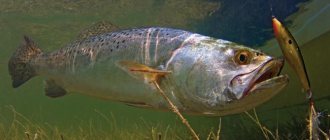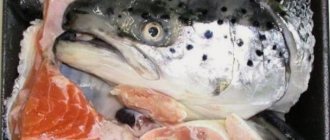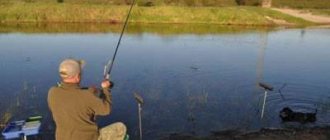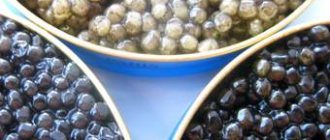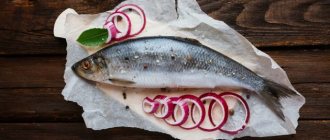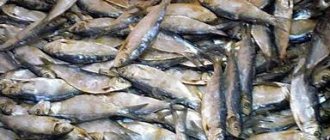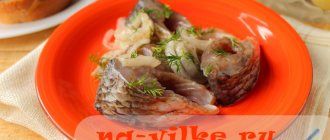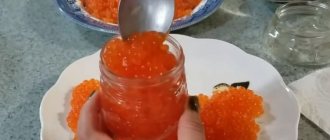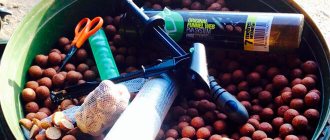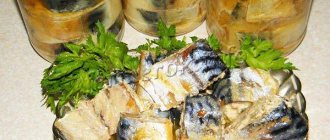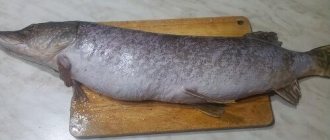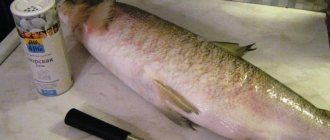How to write a business plan
Before you take on a business plan for a sturgeon farm, you need to study the market and future competitors.
“Call fish stores and supermarkets, find out at what price they will buy fish,” advises food market expert Andrei Samoilov. – Check the rules and tariffs. You will probably have to pay well to “get on the shelf.” Based on the information received, you should choose a strategy for the development of a sturgeon farm. You can find a variety of business plans on the Internet - some claim that a few million are enough to start, others calculate in billions. For example, to produce up to 2 tons of black caviar annually, you will need a building with an area of 1800 square meters. m and about 2 billion rubles. And for a mini-farm with a productivity of 400 kg of fish per year, 100 sq. meters of indoor space and a couple of million rubles.
Sturgeon farming business
Sturgeon breeding as a business is a very profitable idea. Despite the fact that you will initially have to make an investment of 200 thousand rubles to purchase equipment, the business will soon begin to pay for itself. And you will also constantly have to spend money on buying food and paying for electricity, and this is about 150 thousand for the full cycle of growing fish.
At the beginning of the cycle, you will also have to buy fry, and this is about another 20 thousand. In total, your starting capital will be 370 thousand, but after just 1 full cycle of growing fish you will be able to cover the costs and make your first profit.
It is most profitable to sell sturgeon in bulk, for example, to restaurants. This guarantees you a stable profit and will also allow you to sell your goods at a favorable price. Prices for sturgeon are quite high, therefore, from 1 kg of fish you will get approximately 500 rubles in profit. In a year, you can earn about 400 thousand rubles in net profit from growing sturgeon.
Installation for producing 2 tons of caviar per year
The project involves obtaining caviar without killing females, using “milking”. The first caviar is obtained in the 4th year (if females of the hybrid Bester Aksai breed are raised from fry of 10 grams, the option of purchasing adult females is possible), reaching the design capacity occurs in the 8th year.
The installation can produce up to 2 tons of black caviar without killing females, or 0.5 tons of black caviar by killing females. Caviar productivity of 2 tons/year of black caviar is achieved when growing sterlet or a hybrid of the Bester Aksai breed, because they spawn every year. When growing Siberian or Russian sturgeon in a caviar barn, the productivity of the installation will decrease to 1 t/year, because they spawn once every two years. A combined method of obtaining caviar is also possible. When the females first mature, the eggs are obtained by the “milking” method, without killing the female. The following year, caviar is obtained by slaughtering the female. In this case, the productivity will be about 1 ton of black caviar per year. Your sturgeon breeder should be involved in planning and organizing fish farming operations on the RAS. It determines which type of sturgeon is best to grow, from which species and at what age to create a broodstock, etc. He can grow Siberian or Russian sturgeon, bester, sterlet, etc. in this RAS. – the choice is up to the farm owner.
The installation is intended for the cultivation of sturgeon fish species and consists of 2 independent RAS.
The minimum design “safety margin” for all its critical parameters is 20%. The safety margin ensures that the filtration system maintains the operating parameters of the water in the event of feed consumption exceeding the nominal value. To ensure control of the operation of the installation, control of water parameters and the feeding process, we have developed our own automation system based on a Siemens controller. The automation system allows you to reduce the number of maintenance personnel, increase the reliability of the installation, and reduce the consumption of feed, electricity and heat. Automation automatically records and archives data at any interval. There is an emergency notification system by sending SMS messages to a mobile phone. Particular attention is paid to the reliability of the system; instructions are given to the RAS operator on what needs to be done first in various emergency situations.
Description of RAS:
| Building area | ≈ 1500 m2 | |
| Maximum height of rooms in the building | ≈ 3.5 m | |
| Electricity consumption | in year: | ≈ 382000 kW |
| Water consumption | in year: | ≈ 12600 m3 |
| Feed consumption | per day, maximum: | ≈ *** kg |
| in the first 4 years: | ≈ 66 t | |
| The cost is only for fish farming equipment, without the building, communications, concrete work, electrics and automation. | Euro | ≈ 350 000 |
If built from scratch, “in the field,” the project is estimated to cost approximately 1.5 million euros. This price includes the cost of the building with all communications, ventilation, heating and water cooling systems. We can fit the installation into existing premises if it meets our conditions.
The following communications must be connected to the building:
- cold water,
- electricity, 380 V,
- sewerage, Ømin = 200 mm,
- heating.
An example of calculating the financial part of a sturgeon project is presented in the Exel file: hk_sc3_1 web.xls A list of equipment with prices and characteristics is given, as well as calculation of the cost of sturgeon. The calculation is made on the assumption that all equipment is supposed to be purchased in EU countries.
The technological project consists of two volumes.
The first volume is 121 pages, not counting drawings, photographs and other explanatory material. 76 illustrations and diagrams. Drawings in A3 format – 12 pcs. In Russian.
The second volume is 61 pages, not counting drawings, photographs and other explanatory material. 57 illustrations and diagrams. Drawings in A3 format – 12 pcs. In Russian.
Technical (working) designs of have been developed to house a caviar farm with a productivity of 1-2 tons/year of black caviar and a recirculating system for growing sturgeon for meat with a productivity of 45 tons/year. The projects are made according to the norms and regulations of the EU and the Russian Federation.
The projects used the original idea of a recirculation system with an inexpensive construction cost, with calculations of the metabolism of sturgeon (of different ages) and the power of the system. To minimize the building area, RAS uses large rectangular pools.
Sturgeon breeds for breeding
Sturgeon are large bottom-dwelling fish that usually live at depths from 2 to 150 meters. There are freshwater, anadromous and semi-anadromous species. The first live permanently in the river basin, the second come here from the sea only to spawn, and the third try to stay near the mouth, making short migrations during the breeding season.
The sturgeon genus consists of 17 species, each of which has commercial importance. But their population is rapidly declining, which makes us think about the prospects for such a business as fish farming in artificial reservoirs. Fortunately, almost all sturgeon breeds are suitable for this:
- Siberian sturgeon. Reaches a length of 2 m and a weight of 200 kg. Includes freshwater and semi-anadromous varieties that live in the rivers of Siberia and Transbaikalia, as well as in lakes in eastern Kazakhstan. Males mature at 9 years, females at 12 years;
- White sturgeon. The largest of the sturgeons. Maximum dimensions: weight 816 kg and length 6 m. Fishing weight is 15–20 kg. White sturgeon is an anadromous fish living off the coast of North America, from the Aleutian Islands to California;
- Russian sturgeon. Breeding sturgeon at home began with this species. Reaches a length of 2.4 m and a weight of 120 kg. Fishing weight - up to 20 kg. Lives in the Black and Caspian Seas. Males mature at 8–10 years, females at 11–12 years;
- Amur sturgeon. Includes freshwater and semi-anadromous varieties. Reaches a length of 3 m and a weight of 200 kg. The average weight is 50–70 kg. Lives in the Amur basin and the Sea of Okhotsk. Males mature at 9–10 years, females at 11–13 years;
- Atlantic sturgeon. Rival of the white sturgeon: 6 m in length and 400 kg in weight. Found only in the Black Sea and the Bay of Biscay, the total population numbers no more than 1000 individuals. Males reach maturity at 7–9 years, females at 10–14 years;
- Lake sturgeon. Reaches a length of 2.7 m and a weight of 130 kg. It lives primarily in the Great Lakes of North America, as well as in the Mississippi and St. Lawrence river basins. Males mature at 7–8 years, females at 10–13 years;
- Sakhalin sturgeon. Almost extinct species. The average weight is 45–50 kg, but there are individuals 1.8 m long and weighing 80 kg. A small population prefers the Sea of Okhotsk and the Sea of Japan;
- Persian sturgeon. An anadromous breed, close to the Russian sturgeon. Reaches a weight of 80 kg and a length of 2.4 m. It is found mainly in the southern regions of the Caspian Sea, although there is a small population in the Black Sea;
- Sterlet. A small freshwater representative of sturgeon, living in the rivers of Siberia. It is distinguished by early maturation: males begin to reproduce at 4–6 years, females at 6–8 years. With a maximum length of 1.3 m, it weighs 16–20 kg;
- Stellate sturgeon. An anadromous breed, reaching a weight of 80–100 kg and a length of 2.2 m. It is the most heat-loving, and therefore goes to spawn later than others. Lives in the Black and Caspian Seas. Males mature at 8–12 years, females at 10–14 years;
- Beluga. The largest representative of the genus, growing to a length of 5 m and a weight of more than 1000 kg. Habitat: Azov and Black Seas. There is also a large population in the Caspian Sea. Males reach maturity at 12 years, females at 16 years;
- Kaluga. In 55 years it grows to a length of 3.7 m and a weight of 380 kg. It has two varieties - semi-anadromous and freshwater. Both live in the Amur basin. Kaluga reaches maturity later than everyone else - males at 16–18 years old, and females at 18–20 years old;
- Thorn. Lives mainly in the Caspian Sea. Very rare in Black Sea waters. This migratory fish grows to a length of 2.15 m in 30 years and weighs 40 kg. Males reach maturity at 10 years, females at 12 years;
- Paddlefish. In nature, it lives in the Gulf of Mexico, where it is very rare today. At the same time, it grows successfully in an artificial environment: in a year you can get individuals up to 70 cm long. Reaches a length of 2.2 m with a weight of 90 kg;
- Bester. Being a hybrid of beluga and sterlet, it combines the rapid growth of the former and the early maturation of the latter. Weighing 30–40 kg, it reaches a length of 1.8 m. It is kept exclusively in nurseries: it is prohibited to release it into the wild.
How to start a business
According to the legislation of the Russian Federation, commercial fish farming and the opening of a fishery are entrepreneurial activities, with corresponding consequences: payment of taxes, control by government bodies, responsibility for production safety and the quality of finished products. Accordingly, you need to start promoting the idea: fish farming in RAS as a business by registering the enterprise as an individual entrepreneur or LLC, and obtaining documents.
When opening a fish farm from scratch, we recommend starting with:
- From the creation of a concept and business plan for fish farming.
- Registration of peasant farms.
- Construction (purchase) of a swimming pool.
- Purchase of young animals and stocking of fish.
If the quantity of products supplied to the market does not exceed 1-2 tons per year, the entrepreneur is not required to register. The products are sold as surplus resulting from farming.
Fish breeding enterprises are registered: in the form of individual entrepreneurship (IP) or limited liability company (LLC). Both options allow you to use a simplified taxation system, avoiding filling out additional documents.
To register a business activity you will need:
- statement;
- receipt of payment of the duty;
- copy of passport and TIN.
In your application, please indicate the required OKVED codes. For fishing and fish farming - OKVED 2.03.
You will also need permission from the SES and, probably, a medical and biological report on the state of the water in the pool (reservoir).
Those wishing to rent a reservoir, according to a business plan for growing fish, should take into account that according to Decree of the Government of the Russian Federation No. 569 (07/28/2008), legal entities and individuals planning business activities “affecting the state of aquatic biological resources and their habitat” are obliged submit an application to the regional office of the Federal Fisheries Agency.
Where to buy fingerling sturgeon
It is almost impossible to obtain sturgeon fry at home, since the full development of the embryo requires specific conditions, which are quite difficult to achieve without special equipment and appropriate skills.
It is best to purchase fry from large fisheries that breed sturgeon. The average weight of the fry should be about five grams.
You should not save on fry - the growth rate and productivity of the fish, and, accordingly, profit, depend on the quality of the fry.
Fish farming business plan
The purpose of creating modern fishing enterprises is considered to be the breeding of fish in various reservoirs. From here we can highlight the following areas in fish production:
- Fish farming in ponds
- In pools where mainly carp, pike, perch and salmon are grown
- Cage production intended for rearing large species
- Mini-reservoirs, which are small containers for growing a limited number of individuals
The initial stage in slave production is the creation of a business plan in which all the necessary figures for profit and profitability of production can be calculated.
First of all, you need to select a body of water in which your future enterprise will be created. To do this, it is not necessary to look for a reservoir in the countryside, because... a plot of land in an urban area is also perfect for these purposes. If everything is clear with a reservoir in rural areas, then in cities everything is not so simple.
In order to prepare the main body of your future enterprise, you need to organize either a special pool for growing fish, or install a homemade or custom-made tank (container), in which our backwater for fish will be.
In addition, if you own a sufficiently large plot of land, you can create an artificial pond, which is the most attractive way to produce fish.
A pond for fish must meet certain requirements. Its depth must be at least one and a half meters so that the fish develops in a favorable environment. If you have created an artificial pond, then its bottom should not contain any negative impurities, such as peat or silt. In addition, the reservoir should contain vegetation in moderate quantities.
How to create vegetation in artificial reservoirs is up to you to decide. But we must not forget that the reservoir is intended not only for growing fish at home, but also for selecting eggs and incubating future fry. Therefore, in order to receive any economic benefit from your production, it is necessary to take into account all the above factors.
If we consider the process of fish breeding in natural reservoirs, then the following types of farms are suitable:
- ponds
- riverbed reservoirs
- beam
Of course, in riverbed and ravine reservoirs the process of growing fish is much simpler and more convenient; at the same time, the use of ponds will be economically beneficial. All natural reservoirs of natural origin for raising fish in a pond must include a feeding pond, a pond for raising fry, a pond for spawning and a pond for habitat in the winter.
Water temperature and room for breeding sturgeon fish
In order for sturgeon fish to live and grow and gain weight, it is necessary to maintain an optimal temperature regime of the water in which the fish lives.
The optimal temperature will be from 18 to 24 degrees, at which the fish will grow most comfortably. In winter, it may be necessary to heat the water to the required temperature, which will increase energy consumption.
But in winter you cannot do without heating the water, otherwise there may be unfavorable conditions for breeding fish, and they may often get sick.
In general, sturgeon can be raised in an apartment where there is running water and sewerage.
In a private house, you can breed sturgeon in any room where there is heating.
A small farm can also be equipped in a greenhouse by connecting the necessary lines for heating air and water.
When calculating the required area of the room, you need to take into account how many pools there will be, based on the fact that one pool requires an area of approximately 11 square meters.
As food for sturgeon fish, special compound feed for such fish species is used. How much feed you need per day depends on the age and weight of the fish; feeding occurs approximately 4-6 times a day.
With automatic feeding, food is supplied to the fish more often.
Breeding sturgeon in a private home
Breeding sturgeon at home will be even easier if you have a private home. So, on an adjacent site you can make a pond, create a suitable habitat in it and not spend extra money on specialized equipment.
So, first you will need to create an artificial pond. To do this, it is best to turn to professionals. Before introducing the fry, the pond must be cleaned and a liming procedure must be carried out: pour a layer of lime onto the bottom of the pond, dilute it with plenty of water, and rinse it at the end of the procedure.
This is interesting! It will be a big plus if the bottom of the pond has the shape of a bowl.
You cannot put fry into a “naked” pond, which will only contain water. It is imperative to create a fauna familiar to sturgeon by placing algae, various fertilizers, reeds, worms and mollusks in the water. If flies and other insects get into the pond before the fry move in, there is no need to catch them.
When the pond is ready, the fry can be moved there. This is best done in the summer and preferably at night. When the fry grow up, they should be transplanted into a spawning pond, also created artificially. When purchasing sturgeon fish for breeding, always pay attention to their condition, because if one fish is infected with some kind of infection, it can infect all the others.
Sturgeon and sterlet are very heat-loving fish, so if you plan to breed sturgeon in a pond, then you definitely need to take care of heating the water in the cold seasons. If for some reason it is not possible to install heating, then the sturgeon can be moved to the pool for the winter.
Breeding sturgeon in your own pond
If you do not have the opportunity to install a swimming pool and provide everything necessary, but you already have a pond in your own summer cottage, then this option is also being considered, only the business will be more seasonal than year-round, since in this case you need to navigate the climatic conditions . This fish definitely cannot survive in winter.
If you don’t have a pond, then dig it yourself with a bowl-shaped bottom. 1 meter deep will be enough.
Before releasing the fry, be sure to clean the pond for half a month. To do this, we pump out the water, place a layer of lime on the bottom, and only then pour in new water. Algae, reeds, aquatic plants, and so on must necessarily grow in the pond. Additionally, you can place various mollusks, worms, plankton and snails. Don’t be afraid of the insects that will appear in your pond, all this will only benefit our fish, and besides, this is additional food.
It is best to release babies into the pond at night in the summer. After they have reached a certain size, the sturgeon move to the spawning pond. There the fish lay eggs and hatch fry. When the babies appear, they are returned to the 1st pond and the process of growth of individuals is repeated.
Breeding sturgeon on a mini-farm
You can breed sturgeon at home if you create a certain temperature regime and provide water and sewerage.
What do sturgeons eat at home?
The best solution is to purchase special food for sturgeon from companies that breed these fish species. Once you gain experience, you will be able to produce it yourself.
Since the sturgeon is a bottom-dweller and seeks food using its sense of smell, the food must have an attractive smell to the fish and be of sufficient weight to sink rather than float on the surface.
As a rule, sturgeon are given high-calorie feed containing up to 50 percent protein, about 25 percent fat and at least three percent fiber (a fiber content of four to five percent is considered optimal).
Additionally, lysine and phosphorus are added to the feed. Moreover, each age group of fish requires special food.
Composition of food for sturgeon
| Component, % | Option 1 | Option 2 | Option 3 |
| Fish flour | 45,97 | 36,97 | 42 |
| Wheat flour | 5 | – | – |
| Soybean meal | 20 | 28 | 24,97 |
| Feed yeast | 1 | 2 | – |
| Vitamin premix | 1 | 1 | 1 |
| Fish fat | 3 | 3,5 | 3,5 |
| Sunflower oil | 3 | 3,5 | – |
| Linseed oil | – | – | 3,5 |
| Powdered milk | 5 | – | – |
| Wheat bran | 5 | – | – |
| Corn gluten | 10 | 15 | 15 |
| Chlorella | – | 10 | – |
| Corn germ | – | – | 5 |
| Zeolite | 1 | – | – |
| Probiotic | 0,03 | 0,03 | 0,03 |
| Sunflower fuzz | – | – | 5 |
The process of preparing compound feed is difficult for a beginner to master. In this case, it is necessary not only to maintain the exact proportions, but also to granulate the mixture correctly so that it retains an appetizing smell, sinks well and does not dissolve in water too quickly. At home, it is better to use ready-made food of domestic or foreign production. They are produced for fish of different ages:
- For broodstock, a mixture is used that increases the sexual activity of individuals. It contains fishmeal, protein sources and vitamin premixes;
- For larvae, food made from dried microorganisms is suitable - brine shrimp, daphnia, cyclops. It is added to the fry’s diet for the first three months;
- Three-month-old young animals are given growth compound feed with a high content of vitamins, in the form of granules with a diameter of 1–2 mm;
- For commercial sturgeon, a mixture is used that includes 50% protein and 15% fat. It contains almost no carbohydrates: this prevents fish obesity.
Fry need to be fed six times a day, and older ones - four times. It is important to adhere to the schedule: sturgeons get used to receiving food at the same time, while violation of the schedule provokes stress in them. Feeding rates are determined as a percentage of the live weight of the fish.
Equipment for sturgeon breeding
Since in the tanks in which the sturgeon will live, it is necessary to ensure filtration, aeration and water purification, as well as maintain a constant temperature of about 20 degrees Celsius, you will need:
- filter;
- pump;
- compressor;
- oxygen generator;
- thermometers;
- oximeter;
- heating system (you can use a heating cable that is used in heated floors).
In addition, automatic feeders will be a worthwhile purchase, which will significantly simplify fish care and provide significant time savings.
Organization of a reservoir for sturgeon breeding
For the convenience of growing sturgeon, it is enough to have a plastic pool with a depth of 1.0-1.2 meters and a diameter of up to 3 meters. This is the most convenient pool model, since it can be maintained without much difficulty.
Water quality for sturgeon
| Index | Norm, g/m³ |
| Hydrogen index, pH | 7,0–8,5 |
| Oxygen, g/m³ | 7–12 |
| Nitrogen, g/m³ | 2–4 |
| Carbon dioxide, g/m³ | 18–20 |
| Phosphorus, g/m³ | 0,3–0,5 |
| Iron, g/m³ | 1–2 |
| Manganese, g/m³ | 0,01–0,02 |
| Nitrates, g/m³ | 6,7–7,3 |
| Nitrites, g/m³ | 0,1–0,2 |
| Ammonium, g/m³ | 2–5 |
| Ammonia, g/m³ | 0,03–0,05 |
| Suspended solids, g/m³ | 25–30 |
To maintain optimal conditions for growing sturgeon, you need to regularly monitor the pH level. Adult fish can withstand short-term changes in the pH range of 6.0–9.5. But at low values, the effect of nitrates increases, and at high values, the concentration of ammonia increases. To regulate acidity, it is advisable to use weak solutions of hydrochloric acid, caustic soda or caustic potassium.
How to breed sturgeon
The conditions for breeding sturgeon are simple : it is necessary to constantly monitor the proper operation of the equipment, the purity of the water, and indicators of temperature and oxygen saturation.
The water in the tanks must be transparent and visible to the bottom, so it is necessary to promptly remove sediment and waste from the tanks.
The average density of fish stocking in tanks should not exceed 60 kilograms of weight per square meter.
Sturgeon is grown to a weight of 500-650 grams , after which it is caught for sale.
It is not worthwhile to grow larger fish, as it will be much more difficult to sell.
The growth rate of sturgeon is uneven - some individuals (usually about 20 percent of the total) can reach their target weight in five months, while the majority reach this weight in about seven months.
This happens because larger and stronger individuals push small fish away from food, taking most of it for themselves.
The grown fish should be removed evenly, and the supply of fry should be uniform.
Sturgeon breeding methods
The method of breeding sturgeon is determined by the availability of land and a reservoir near the farm, the climate in the region and the availability of natural food supply. The following options for keeping fish for commercial purposes are distinguished:
- In the pond. To grow sturgeon in a pond, a small natural reservoir is used. It is cleaned, populated with plants, worms and snails, and fry are released here in the spring. In this case, the problem of wintering fish arises: even in frosty conditions, the pond should not freeze to the bottom;
- In the swimming pools. If there is no suitable natural reservoir on the site, you can dig artificial ones. Their depth reaches 2 m, area - up to 200 m². When breeding sturgeon in a pool, it is necessary to ensure high quality water by constantly filtering and saturating it with oxygen;
- In the cages. If the climate permits, in a freshwater river or lake basin it is more profitable to raise sturgeon in mesh cages on artificial food. At the same time, algae and other inhabitants of the reservoir enter the fish’s diet. The cages do not even need to be cleaned, since the waste products of the sturgeon are washed away with water;
- In RAS. Using a RAS for growing sturgeon is the most expensive method; in this case, you cannot do without purchasing special equipment. But at the same time, thanks to the constant maintenance of optimal conditions, the fish here grow even in the cold season, quickly gaining weight.
Technology of fish breeding for caviar
Breeding sturgeon for caviar is a longer and more labor-intensive process. In nature, the female begins to produce eggs only at the age of 15. In conditions created by man, this occurs at 5-7 years. You will need at least six pools for growing fish for caviar. They are installed in a separate building or heated greenhouse. Sometimes a basement is adapted for these purposes. Since under natural conditions the sturgeon lives on the bottom, it does not need bright lighting at all.
Experts say that to start a business you need no more than $4,000. Many entrepreneurs are attracted to this amount of investment. But, unfortunately, not many people stay in this business. Sturgeon farming, for the purpose of breeding caviar, frightens businessmen with its long-term nature. If you start with the specified amount and develop the business yourself, then you can achieve full payback only after 10 years. But after this time, the farmer can count on 30% of the net profit from the initial costs. Another feature of the business is that black caviar produced on sturgeon farms is never prohibited by law.
Growing sturgeon. Business plan. Sturgeon as a delicacy
The price of equipment for breeding sturgeon may not be so high if you make some elements yourself, and purchase food and fry from small farms. Basically, the profit from the sale of one individual is 6 dollars. Accordingly, one small farm gives approximately 3.5 thousand dollars. Not all fry survive and the normal population loss is 30%. In natural habitats, about three percent of the fry survive. After 6 months, the sturgeon is able to gain weight of half a kilogram. At this age, it becomes possible to sell fish; restaurants will happily want to buy sturgeon. The growth of the fry is not uniform. Strong fish receive more food and reach the required parameters faster. The first production cycle ends when all fish reach the required weight. Weight gain occurs over 8-9 months. The owner of the farm will have to take samples of water and sturgeon twice a year. You will need to provide documentation for the farmed products and feed for them. In the first stages you will have to invest a fair amount of money and the payback period is quite long. However, later this activity will bring a decent amount of money.
Advantages and features of sturgeon breeding
Sturgeon farming is in great demand among entrepreneurs, since this business is quite easy to start from scratch if you have the necessary capital. The return on this investment is also quite high, and the risk of going negative is minimal.
So, here are the main advantages of sturgeon breeding as a business:
- Since sturgeon caviar and meat are expensive and are in great demand on the sales market, the return on investment for your business will be ensured. True, at first you will have to spend a lot of money - equipment for sturgeon breeding costs from 200 thousand rubles.
- Caring for sturgeon is quite easy, since they are undemanding to living conditions and tolerate temperature changes well. The main thing is to follow the basic rules, which we will talk about a little later.
- There shouldn't be any problems with food either. In specialized stores you can purchase ready-made food that contains all the substances necessary for sturgeon.
Diseases
Representatives of sturgeon fish species are susceptible to the following diseases:
- adenoviral and iridoviral diseases, as well as diseases caused by herpes viruses 1 and 2: they can be triggered by sudden changes in temperature, increased planting density, and poor-quality water composition;
- myopathy (muscle separation): its development is associated with the presence of toxic substances in water;
- saprolengiosis, a fungal disease that can also affect eggs, develops under poor living conditions, injuries, and weakened immunity.
In order for sturgeon fish to fully develop, it is important to constantly monitor the composition and temperature of the water, provide regular nutrition, and carry out disease prevention.
Benefits and risks of the fishing business
Is it profitable to open a fish farming business? This is a rather controversial issue, but still experts in this industry consider such entrepreneurship quite promising for investment.
A fisheries business is considered a profitable investment, even if prices for fish products fall. For example, when breeding carp, its market price is 60 rubles per kilogram, which means that the profitability of an average-sized business will be 10%.
But at the same time, organizing your own farm is closely connected with a number of risks:
- Administrative barrier. A reservoir or pond should be rented from local authorities - this takes a certain amount of time. Also keep in mind that if a reservoir is given the status of a natural monument, renting becomes impossible.
- Minimum shelf life of products.
- Frequent occurrence of infectious diseases in fish. The most common are intestinal parasites, rubella and bronchomycosis. You need to check the health of the fish population every 10 days; in case of illness, immediately catch the fish, and feed the remaining fish with food containing antibiotics and immunoprotectors.
- It may also be difficult to find distribution channels for products.
Sales of sturgeon fish
Fresh sturgeon can be sold in markets, fish stores, or delivered to restaurants, which usually require about 65 kg of fish per month.
For restaurants to prepare dishes with sturgeon, the ideal option would be a sturgeon weighing 500 grams.
We can confidently say that the sturgeon breeding business is profitable, and in four years you can already organize a large farm with a large annual turnover.
You should start this type of business with a mini-farm of 1000 fry.
Contents of the farm plan for breeding sturgeon fish
In order for the project to fully reveal the specifics and efficiency of the business, we use the following content of the business plan of an enterprise breeding sturgeon :
- research of industry-wide indicators in their dynamics, with the preparation of market development forecasts;
- the amount of funding for the sturgeon farm ;
- technologies for growing sturgeon and the equipment used for this;
- operating expenses;
- volume and structure of the revenue side of the project;
- wage fund and number of employees;
- promotion and distribution policy;
- calculation of the payback period of the project.
Costs of organizing a business and its payback
Breeding sturgeon as a business requires some material costs. However, this has already been discussed. However, the business plan did not include an approximate calculation of expenses that cannot be avoided. The containers and the equipment required for them will cost about 10,000 conventional units. Taking into account that all this is purchased new. Accordingly, used units can be purchased much cheaper.
Approximately 3000 USD That is, a flock of fry will cost. In addition, calculate the budget so that there are funds left for transportation, documentation, other consumables, and food. That is, it will be about another 1000-1500 US dollars.
Video: sturgeon farm - business plan
As for payback, taking into account the timing, the picture appears approximately as follows:
- The fry grow for 8-10 months, after which they reach a weight of no more than 800 grams. This means that it will be possible to start selling meat no earlier than in one and a half to two years;
- For the reason stated above, entrepreneurs in this field of activity are recommended to start with the sale of meat;
- In order to get the first black caviar, you will have to wait at least 3-4 years.
Study of the state and dynamics of the industry
Our business plan for sturgeon breeding is a definite guide that will allow you to achieve your goals. But it is also important to understand that the goals are correct, and their implementation will allow you to get a highly profitable business with development prospects for future periods. To achieve this, analytical work is needed, the result of which, among other things, will be the main advantages of the company that distinguish it from its competitors:
- full cycle of sturgeon cultivation ;
- absence of harmful additives and growth vitamins;
- large volumes of supplies;
- a wide range of fish species and products of its cultivation;
- flexible pricing policy;
- extensive sales network.
In addition to sturgeon, raising trout can be a good direction. Business plan for a trout farm: a farm for breeding and growing trout includes all stages of the production process and calculation of financial indicators. You can launch one type of direction or develop both.
Possible problems and their solutions
No matter how ideal the fry breeding business may seem, everything has its downsides. The main problem that you may encounter at the very beginning is the death of the fry. Often, fry die not because of poor conditions or external factors, but simply because this is a natural process. According to statistics, about 10% of fry die per year and nothing can be done about it. An equally common problem is a power failure. To avoid this, it is worth installing an autonomous generator.
The next problem is equipment failure. This is a fairly common problem in all areas of activity, so it is difficult to prevent.
Advice! If the equipment fails, do not try to fix it yourself, so as not to change the situation for the worse. Since the equipment for sturgeon breeding and propagation has a complex structure, it is better to entrust its repair to professionals.
Video: cleaning the filter yourself
Inappropriate conditions for keeping fish can cause them to develop the following diseases:
- Adenovirus infection. The fish shows apathy, loses weight, and death occurs in 50% of cases.
- Iridovirus infection. Sturgeons refuse food, begin to accumulate at the bottom of the reservoir, and lose body weight. There is hemorrhage from the back and abdominal cavity. Death occurs in 95% of cases.
- Infection with the herpes virus is asymptomatic until the fish dies. The mortality rate is 97%.
- Flexibacteriosis appears as light spots near the fins and on the abdominal cavity. The mortality rate does not exceed 13%.
- Bacterial hemorrhagic septicemia. Sick individuals experience a lack of appetite and pinpoint hemorrhages on the body. Fish swims on the surface. The death rate reaches 70%.
- Saprolegniosis. The disease is expressed in the formation of a white coating in the tail area. The mortality rate reaches 50%.
No treatment has been developed for these diseases. Prevention is compliance with the regime for keeping sturgeons.
Video: DIY ultraviolet lamp for a pond
Video: organizing a sturgeon farm
To create a farm, you need to purchase and install specialized equipment. You can do something with your own hands. And also choose and prepare the room properly.
